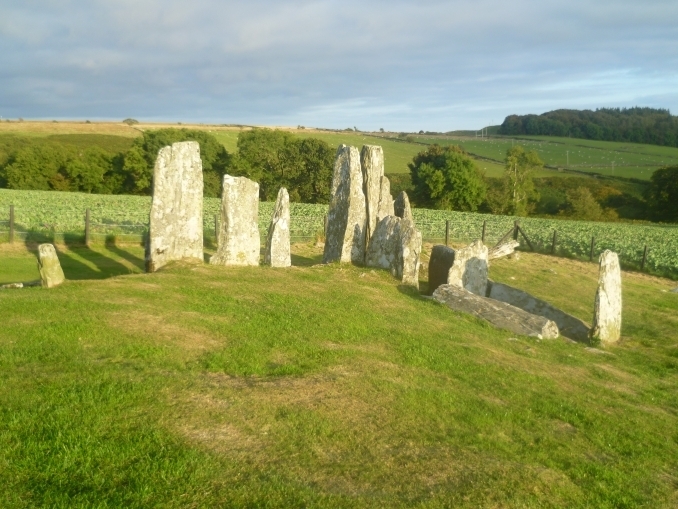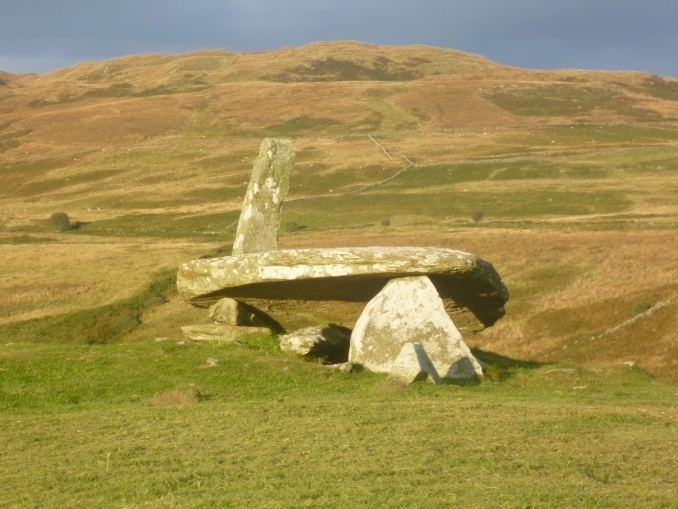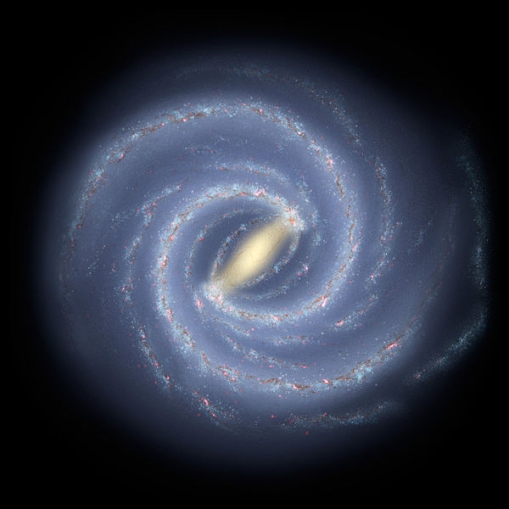The Scottish Neolithic monument that bears a legendary King's name
The Neolithic chambered tombs of Cairnholy stand in Dumfries and Galloway (Scottish Gaelic: Dùn Phrìs is Gall-Ghaidhealaibh) in south-west Scotland. There are two chambered tomb sites that are within just over 164 yards (150m) of each other. They are in a beautiful location on a gentle sloping hill above Kirkdale Glen looking towards Wigtown Bay. Both are very impressive and were built to honour the ancestors of the Neolithic farming communities that lived in this area between 6000 and 4000 years ago. One has an imposing curved facade of standing stones and a forecourt leading to the burial chambers. It is clear from the effort undertaken in its construction and the length of time that it was actively used, that it was an important focal point for ceremonial purposes. Due to the acid soil conditions most of the bones had been dissolved by the time the tomb had been excavated in 1949. However, grave goods were found. Included was part of an axe made from jadeite. A stone of green sourced from the Alps. Giving an indication of the extent of trading links that existed at this time.
The second tomb at Cairnholy measures 20 by 12 metres. There are two portal stones in front of the chambered tomb. There is a v-shaped forecourt at the front of the tomb, which contained two chambers. An arrowhead and a flint knife were found at the site, as well as pieces of Beaker pottery. Local tradition maintains that this was the tomb of the legendary Scottish King Galdus. Little is known of the mysterious King Galdus, but his fame was such that ancient monuments, built long before his time, became associated with him. This Carnholy tomb is one of them. Another site associated with him is the nearby ancient stone circle of Torhouse or Torhousekie. There are nineteen granite boulders in the circle. The three large stones in the middle of the circle are also said to contain the tomb of Galdus.
The Galdus being honoured is thought to be King Corbred II surnamed Galdus and described in "The History of Scotland" by George Buchanan (1506 - 1582) which records that he began his reign in 76 AD and died in the thirty-fifth year of his rule. This is the Corbredus Galdus or Calgacus who fought against the Roman invasions of Scotland. According to Tacitus (c. AD 56 – c. AD 120) the Roman senator and a historian, he was a chieftain of the Caledonian Confederacy who fought the Roman army of Gnaeus Julius Agricola at the Battle of Mons Graupius in northern Scotland in AD 83 or 84.
In his book on the life of his father-in-law, Gnaeus Julius Agricola, written in c.AD 98 Tacitus refers to Calgacus as "the most distinguished for birth and valour among the chieftains." He wrote about a speech which he attributes to Calgacus urging his forces to fight in battle which ends with this damning descriptions of the Romans : "Robbers of the world, having by their universal plunder exhausted the land, they rifle the deep. If the enemy be rich, they are rapacious; if he be poor, they lust for dominion; neither the east nor the west has been able to satisfy them. Alone among men they covet with equal eagerness poverty and riches. To robbery, slaughter, plunder, they give the lying name of empire; they make a solitude and call it peace."
The impact of deities, warriors and kings and queen of legend in all of the Celtic lands was so powerful that their names continue to be associated with geographical features and ancient monuments. It is not just earth bound features that bear the names of these important figures in Celtic history and mythology, but even celestial bodies. As is the case with the great Viking leader Godred Crovan, known as King Orry, who died in 1095. He once ruled the Norse Kingdom of Mann and the Isles, which comprised the Hebrides, the islands of the Firth of Clyde and the Isle of Man and existed from the 9th to the 13th centuries AD. In Manx legend the Milky Way, the galaxy that contains our Solar System, bears his name “Raad Mooar Ree Gorree" (great road of King Orry).








